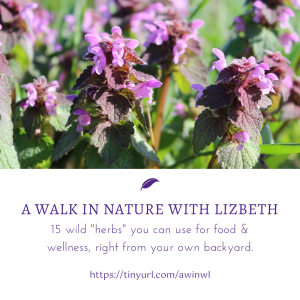Herbal Spotlight: Goldenrod (Solidago spp.)
You know that Autumn is just around the corner when you see the goldenrod starting to bloom. The days are hot and lazy, the nights are getting cooler, and school is just around the corner.
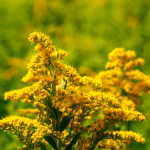
Solidago virgaurea
Goldenrod (Solidago spp) blooms from about mid-August until mid-October, in most places. Its growing habits include disturbed and neglected soil, fields, and roadsides. It’s upright habit make it easy to spot, and it will often thrive where others do not. You may see goldenrod growing with chicory (Cichorium intybus) and mullein (Verbascum spp).
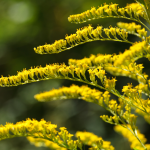
Solidago canadensis
While goldenrod can spread through seeds, it will often spread by rhizomes, forming clumps. This is something to keep in mind if you grow it in the garden intentionally, as it will need to be thinned out every few years.
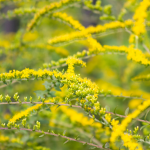
Solidago rugosa
Goldenrod makes an excellent native addition to a butterfly or wildflower gardenscape. And as there are many varieties to choose from, you can easily find a variety that fits your aesthetic and growing zone. During the blooming season, goldenrod will be visited by all sorts of pollinators. During the winter, birds will delight in the seeds. Be careful, though, as some species of goldenrod can be invasive.
There are well over 100 varieties of goldenrod, with at least 60 of them being found in North America alone. Here are three well-known examples:
- Solidago virgaurea – The best known, and generally used for medicinal purposes. S. virgaurea has been studied extensively, and if you check Google Scholar, you’ll find tons of scientific information. This variety is native to Europe
- Solidago canadensis – Native to the southern and eastern parts of North America and is widely naturalized in the western areas. Next to S. virgaurea, this is the most well-known goldenrod variety.
- Solidago rugosa – Native to the eastern half of North America and known for growing over six feet tall.
Look-alikes that could cause a problem:
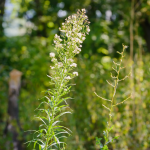
Conyza canadensis / Erigeron canadensis
Horseweed Conyza canadensis / Erigeron canadensis, generally considered toxic, although there is some anecdotal evidence of young leaves and seedlings being safely used as a seasoning, tea, and food source. There are also documented medicinal uses for this herb. As always, do your own research before using any weed as food or medicine!
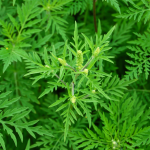
Ambrosia spp
Ragweed Ambrosia spp, is sometimes mistaken for goldenrod. As a mature plant there are some similarities, however, the flowers are generally white and on spikes, rather than arching stems. As with horseweed, there is some evidence of medicinal use, however, always verify this kind of information.
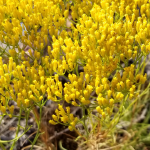
Haplopappus heterophyllus
Rayless goldenrod Haplopappus heterophyllus, which is toxic (found in the southwest of the US), and with no information to the contrary, this is one to definitely avoid.

*IMPORTANT* Make sure you are identifying your wild edibles correctly. If you’re not sure, you can use a plant app, such as Plantsnap* & PictureThis*. Personally, though, I have had the best luck just using Google Lens. Regardless of the app you use, dig a little further to make sure it’s the correct ID.
*I’m not affiliated with any of these apps
Therapeutic qualities:
- Antilithic (helps prevent kidney stones or gravel)
- Antibacterial (helps fight bacteria)
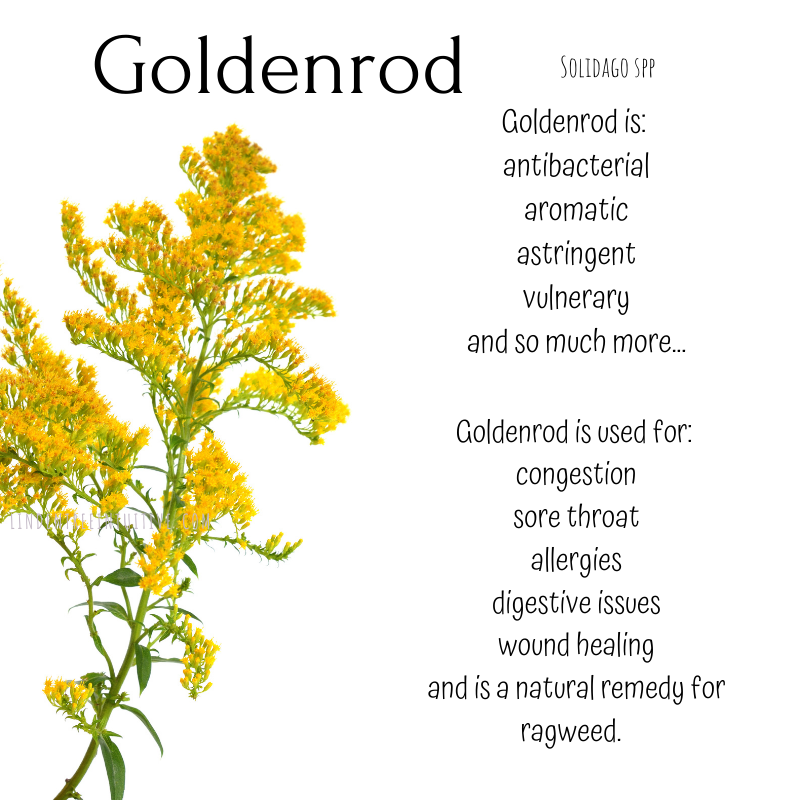
- Aromatic (stimulates and aids digestion)
- Astringent (has a binding and drying action)
- Carminative (calms and soothes the digestive system)
- Vulnerary (helps with wound healing and inflammation)
Medicinal uses:
- Allergies
- Arthritis
- Congestion (sinus)
- Digestive issues
- Eczema
- Kidney stones & gravel
- Minor cuts & scrapes
- Sore throat
- UTIs (infections & inflammation)
Isn’t goldenrod just an allergy-causing weed?
A common misconception about goldenrod is that it’s the cause of the jump in pollen allergies in the fall. While there are people allergic to goldenrod, it’s more likely that the look-alike Ragweed is the actual culprit.
Ragweed doesn’t generally grow as tall as goldenrod, and therefore can remain fairly well hidden, and is a prolific pollen producer. Ragweed’s pollen carries easily in the air, with sneezing and congestion being the common side-effects.
Goldenrod, however, provides us with what we need to counteract the nefarious attentions of ragweed. It has be used for many years as a tea or tincture to help combat autumnal allergies.
Spiritual & Esoteric uses:

Goldenrod is associated with the Divine Feminine and the planet Venus. Its element is Air and can help bring about needed changes.
It is traditionally used for charms, spells, and rituals that deal with abundance, prosperity, luck, and prophesy.
Add some flowers and leaves into a spell jar, dry and use as an incense, tuck into a pocket or charm bag to carry on you during a ritual, job interview, or date.
Goldenrod can also boost spell, intuition and divination workings.
You can make a “wand” out of goldenrod that is similar to a lavender wand and use it in prosperity rituals.
As this plant is associated with the Divine Feminine and Venus, it is also a component in love spells. It can be particularly potent when used for this, as it encourages change, which may be the “magic ingredient” needed to bring a lasting love into your life.
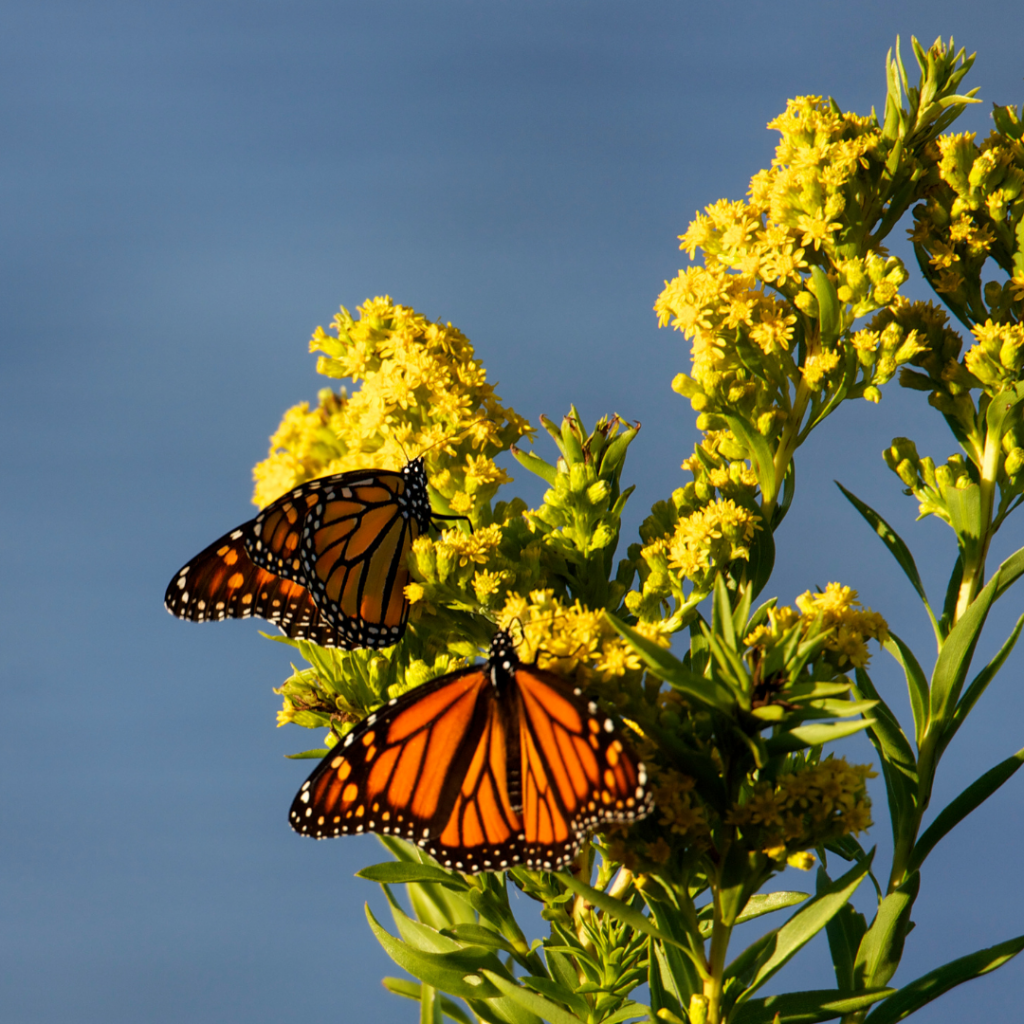 Some new things I’ve learned while researching this lovely lady:
Some new things I’ve learned while researching this lovely lady:
Goldenrod is one of the most important flowers for migrating butterflies as the seasons begin their change. Because it blooms so late into the season, it provides butterfly species, such as the Monarch, with food for the long journey south.
Goldenrod is a natural latex-bearing plant and S. leavenworthii was specifically created to be a high-yielding plant, as a collaboration between Thomas Edison, Henry Ford, and Harvey Firestone. (I found the information here, originally, but there’s more detail here.
Goldenrod stems have been used in dowsing – but not for water. Rather it’s for indicating the correct direction when divining and during a ritual.
Do you have a favorite way to use goldenrod? I’d love to hear about it!
Would you like to learn about other wild edibles? Check out my course “A Walk in Nature with Lizbeth” on Teachable. The self-paced class includes:
- Print & video content.
- Downloadble worksheets & resources
- Free E-book with bonus information
Resources:
Online:
https://flowers.avasflowers.net/avasflowers-wiki/solidago
https://chestnutherbs.com/medicinal-uses-and-benefits-of-goldenrod/
https://blogs.cornell.edu/weedid/field-crops/horseweed/
https://www.ediblewildfood.com/goldenrod.aspx
https://www.gardenloversclub.com/ornamental/flowers/goldenrod/varieties-of-goldenrod/
https://www.flyingthehedge.com/2019/08/herbarium-goldenrod.html
https://www.indigo-herbs.co.uk/natural-health-guide/benefits/goldenrod
https://www.pansymaiden.com/flowers/meaning/goldenrod/
https://witchipedia.com/book-of-shadows/herblore/goldenrod/
Print:
Medicinal Herbal Actions by Kirk Wahl ©2011
Disclaimer: All information in this article is for informational purposes only. No medical claims are being made. If you have any medical questions, please consult with your primary licensed healthcare provider. Linden Tree Intuitive and its associates cannot diagnose, prevent, treat, or cure any medical conditions.


